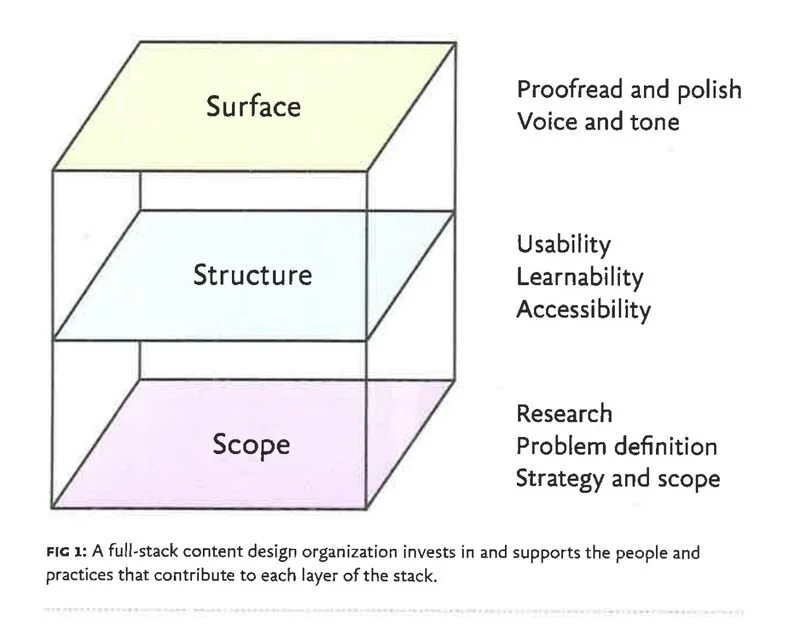The (ridiculously) long road to a living content system
-
Problem: Content designers were outnumbered and stretched thin. Expected to be everywhere at once. Scaling issues kept us stuck in the weeds instead of doing more impactful work.
Solution: Built and scaled a content generation system that 100+ designers used daily to create on-brand, style-consistent content. Along the way, I introduced a new working style for content design. One where AI helped generate, accelerate, and free us up to focus on the bigger content stuff.
Warning: this is a long story. Years in the making.
For us in content, the elephant in the room was always the same: scale.
We were always hopelessly outnumbered. At our peak (7 content designers), it was 20:1. Now it is 30:1.
We were drowning in reviews, content edits, and PMs confidently declaring “I think our voice is this” 🤪
I myself was juggling reviews for 20 designers, working on multiple projects at once (hello, endless meetings and syncs), and trying to grow our content system without it imploding.
Most days felt like this…
We had zero time for in-depth content design stuff. You know, the good stuff: defining requirements, drafting flows, building taxonomies, shaping IA, updating systems.
All the things that actually move the needle on making the experience better through content.
Instead, we were stuck in survival mode. Always in the polishing turds phase. Everything surface-level.
If you’ve heard the term full-stack designer, its that for content. Championed by Beth Dunn.
This is a deck I created and shared with the content designers on full-stack content design.
Let me stop for a second. Because I know I’ve been throwing shade at “surface-level work” this whole time.
I wanna be super clear: the surface stuff. You know the writing, editing, polishing copy. It is super important. I love doing it. But without the deeper layers (the structure, the flows, the IA, the whole “make information actually usable” toolkit), it loses a lot of impact.
Okay, back to your regular scheduled programming.
I knew I had to solve this problem. Partly for the org’s impact. But mostly for my sanity.
How do I give all the content designers more time? How do I improve content quality at scale?
You name it, I probably tried it:
Moved guidance to Figma where designers live. Crickets.
Did voice and tone read-outs at Org Show and Share’s. Crickets.
Build cheatsheets and Figma templates. Crickets.
Meanwhile, people kept not following the style. The voice was off here, the tone was not quite right there.
Designers just weren’t getting it. And I don’t blame them. They were buried under their own mountain of work.
That’s when an idea started to spark.
It wasn’t fully formed at first, but it always circling the same goal: a system that actually knew our guidance, could respond back to you, and even create content with you.
Something to speed up content generation for the whole org. A writing partner in your pocket.
And the timing? Perfect actually. On two fronts:
For the last few years I had been developing and maturing our content guidance
LLMs were finally hitting their stride. It was starting to be possible to build a talking system.
So I got to noodling. Along the way, I shared what I was learning with people. Keep in mind, these were the early days…
Aug 2023 - When custom-instructions came out.
Nov 2023 - When customGPTs came out, the true idea started to form. (PS. ignore how I say Grok 🤣)
Dec 2023 - Alpha demo for Write Like Webex
Okay cool. I built a useful tool. Hard part over, right?… nope.
All that above, yeah, that was the prologue. The real work was about to start.
I had to sell the vision. I had to get people on board. And, shocker, the toughest ones—the content designers.
First things first, what’s the master plan for content design in the AI world?
With buy-in, I ran an alpha with 10 designers. Got feedback. Tweaked. Ran a beta test with 30 designers. More tweaking, but results looked solid enough to unleash this on the whole org.
A place I knew this tool would be super valuable.
The 30+ designers in Shanghai working on the Webex app (our flagship product). Language had always been a barrier, hurting the experience and brand. They can now create clear, consistent content without fighting translation gaps.
This set up the next challenge: defining a new working style for content design.
At first, everything was running smooth.
Then the cracks showed up. Our review sessions were filling with weaker and weaker content.
I traced it back to something that feels obvious in hindsight, but I completely overlooked in the moment: most of the org didn’t actually know how to prompt.
Okay, so, side quest… Teach org how to prompt. This solves two big problems:
Most folks still hadn’t even touched GenAI like ChatGPT yet (in 2024, wild I know)
Write Like Webex was suffering from the classic garbage in, garbage out problem
I created a simple prompting process with guidance, took it on a little roadshow.
I even taught the tool itself to walk designers through the prompting process step by step. Spoon-feeding it to them.
And together with my fellow content designers we ran a workshops to put it into practice.
Here’s one I facilitated.
I know, I know. I’m wrapping this up.
As of 2025, every designer (100+ of them) is using the tool to handle content edits and minor flows without a content designer having to review. The large-scale RC phase is complete.
Any future plans you may be asking? Yes, a lot. Most important, rebuilding the system fully in-house so it’s more controllable, LLM-agnostic, came move into our tools, and expanding it to PMs and engineers too.
Most important: this is finally freeing up content designers to focus on the meaningful work we’ve been trying to get to all along.
Give Write Like Webex a try yourself.
PS.
Yes, the irony is not lost on me. If you’re often seen as the person who fixes content, why on earth would you build a tool to automate fixing content?
On the surface, it sounds like handing in your own resignation. And to higher-ups not in the know, any technology is indistinguishable from magic.
But what I do know is this: building this tool (and others like it for design) showed me it can automate big chunks of the process, but not all of it. Not even close.
PPS.
You still need a person with content knowledge to set it up and maintain a living content system.
So give me a call.



